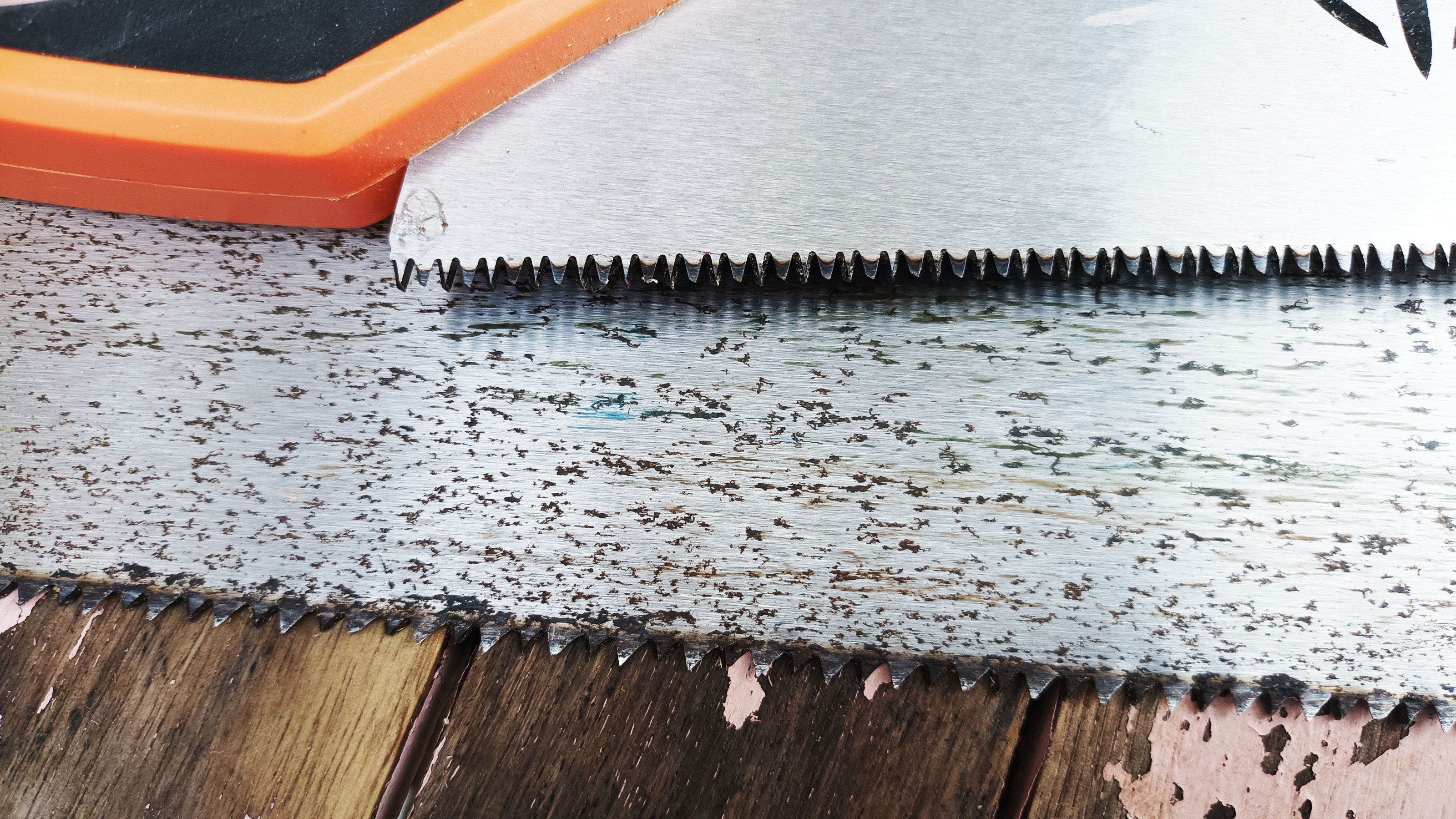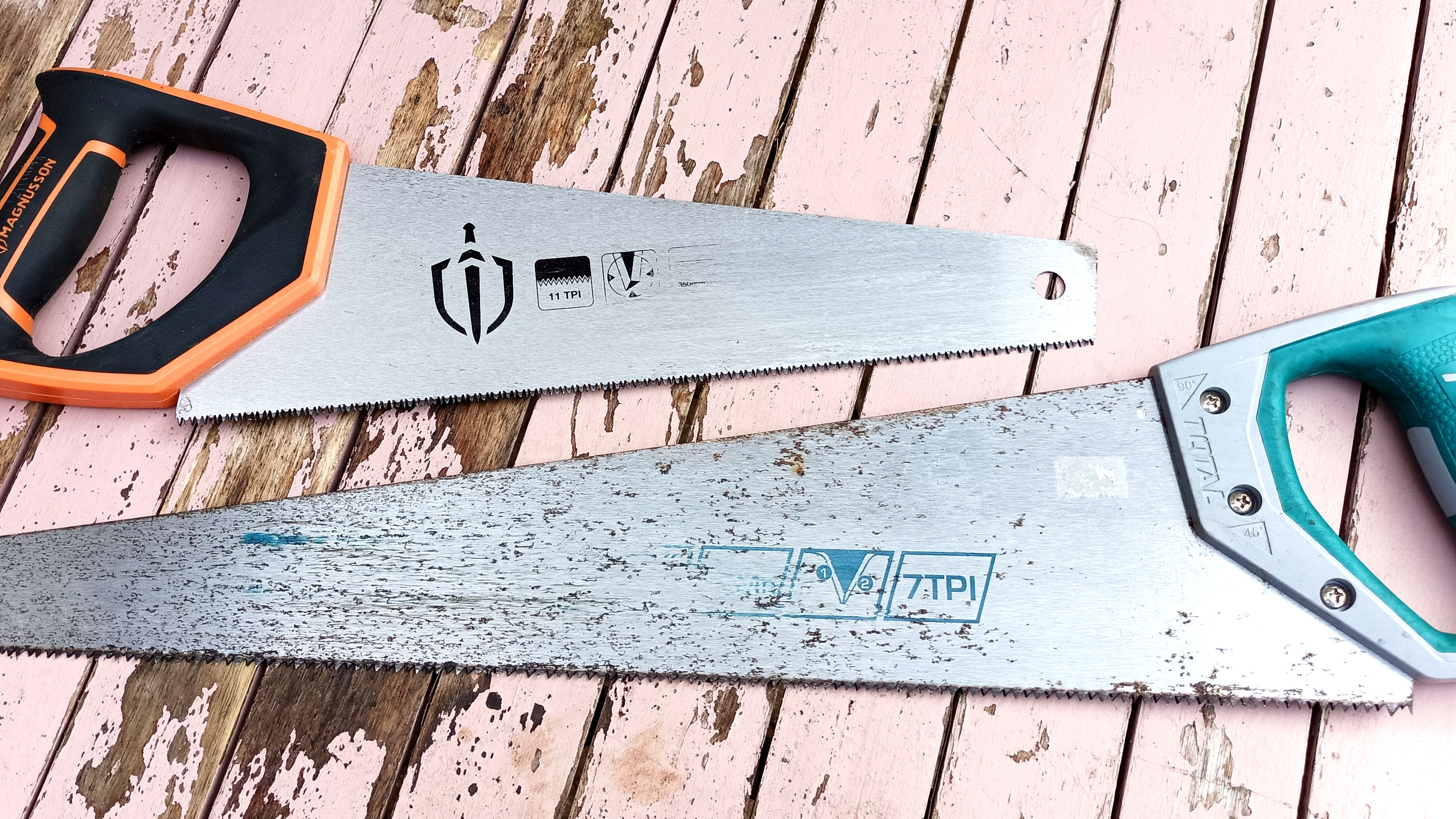What is saw TPI and how many 'teeth' do I need on my blade?
The saw TPI determines how many teeth a saw has and how well it works. Here we define what TPI means, what it means for a saw blade and which you will need

You need a new saw or saw blade but what saw TPI do you need? Whether you are looking for a new hand saw, hack saw, or a blade for a reciprocating saw you need to consider how many teeth the blade has.
Whatever type of saw you are looking to add to your DIY collection, the TPI needs to match the project you are working on. Get the wrong TPI and its almost inevitable you’ll be heading back to get a new saw or blade at some point to finish a job properly.
Here we reveal the subtleties and nuances of saw TPI to help you choose the right saw or blade.
What does saw TPI on a saw mean?
TPI stands for Teeth Per Inch and refers to the number of teeth you will find on each inch of a saw or saw blade. This will differ from saw type to saw type. For example, a hand saw can have as little as 7 TPI, while a coping saw (check out our what is a coping saw piece if unsure) will have a smaller blade with a higher TPI.
As a general rule the higher the TPI the smoother the cut, the lower the TPI the rougher and quicker the cut. But, the number of teeth per inch may need to be higher for different and harder materials to get a decent cut.
How is saw TPI measured?
Teeth Per Inch refers to how many teeth there are in an inch of blade, but the teeth are not measured from the tip of the tooth. They are measured from the bottom of the teeth which are known as gullets. Measuring from tip to tip is known as PPI (Point Per Inch).
Is a higher saw TPI better?
Yes and no because it will depend on what saw you are using and which material is being cut. For example, if you are looking to demolish a previously built stud wall you don't need a high TPI saw as you don't need to worry about the finish of the cut. You will want to be using a saw with a low TPI that will rip through timber quickly, so you can get the job finished quicker. You can use a higher TPI saw if that is all you have, but it will need more effort and take longer.
However, if you are building furniture or cutting exposed edges that need a clean cut then a saw with a higher TPI is typically a better choice. If you are cutting harder material like metal then a higher TPI generally works better.
What type of saw blades are measured by TPI?
Typically TPI is used for straight saw blades like hand saws, jigsaws, tenon saws and reciprocating saws. However, a circular saw or mitre that uses circular blades are not typically measured in TPI. They are commonly measured by the total number of teeth around the circumference of the blade.
24 teeth is a common option when you need to rip through wood quickly and don’t need a cut with finesse. Blades with more teeth such as 60T and 80T provide a much smoother finish, like you see on cut sheets of wood.
When choosing a circular saw blade, also look for the kerf. This is the width of the material that is removed when the blade is cutting. This is very similar to the width of the blade but the angle of teeth or the size of the tip can mean slightly more material is removed.
What is the best TPI to saw wood?
This is a common question asked by DIYers, but this depends on the job and the type of wood. If you are using a handsaw for general everyday tasks you typically choose a saw with 7- 15 TPI.
Obviously, the fewer the teeth the coarser and quicker the cut. If you are cutting battens for a stud wall, fence posts or trees/bushes you can use a 7-10 TPI saw like this Spear & Jackson Wood saw from B&Q.
If you are looking for a finer finish you need a 11-15 TPI on your saw. Hand saws with a higher teeth count are often smaller in length to help give more control over the cut.

What is the popular TPI for hacksaw blades?
Hacksaws are commonly used to cut through metal – and plastic – and have a higher TPI than a normal saw to help make this happen. Typically, hacksaw teeth have 8, 14, 18, 24, or 32 TPI with 24 teeth being a common option. If cutting brass, copper, or aluminium a coarser 14-18 TPI can be used.
How to select the TPI for a reciprocating saw?
Reciprocating saws can tackle a lot of different materials with the right blade. Check out our What is a reciprocating saw guide for the benefits and uses. You can cut through wood, metal, plastic, plaster and masonry.
If you are tackling a demolition job that involves wood, plasterboard, nails and screws you want to be looking at a blade with 8-11 TPI. You can use this for general wood sawing tasks, but a coarser 6 TPI blade will be quicker. Blades in the 12-18 TPI range are typically used for cutting metal and getting finer finishes on wood.
Get the Homebuilding & Renovating Newsletter
Bring your dream home to life with expert advice, how to guides and design inspiration. Sign up for our newsletter and get two free tickets to a Homebuilding & Renovating Show near you.
Steve Jenkins is a freelance content creator with over two decades of experience working in digital and print and was previously the DIY content editor for Homebuilding & Renovating.
He is a keen DIYer with over 20 years of experience in transforming and renovating the many homes he has lived in. He specialises in painting and decorating, but has a wide range of skills gleaned from working in the building trade for around 10 years and spending time at night school learning how to plaster and plumb.
He has fitted kitchens, tiled bathrooms and kitchens, laid many floors, built partition walls, plastered walls, plumbed in bathrooms, worked on loft conversions and much more. And when he's not sure how to tackle a DIY project he has a wide network of friends – including plumbers, gas engineers, tilers, carpenters, painters and decorators, electricians and builders – in the trade to call upon.

